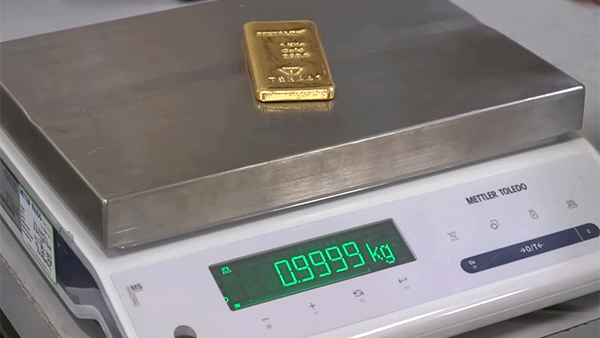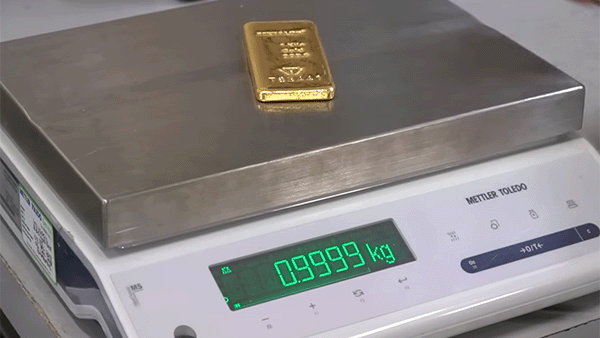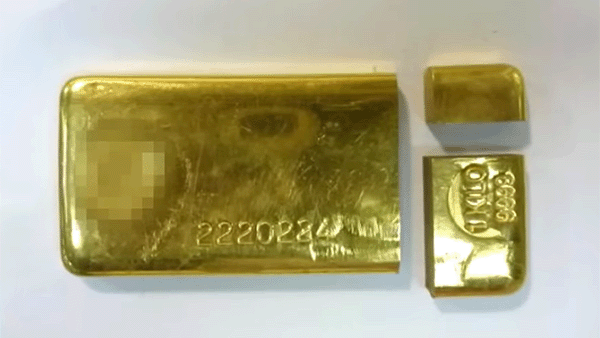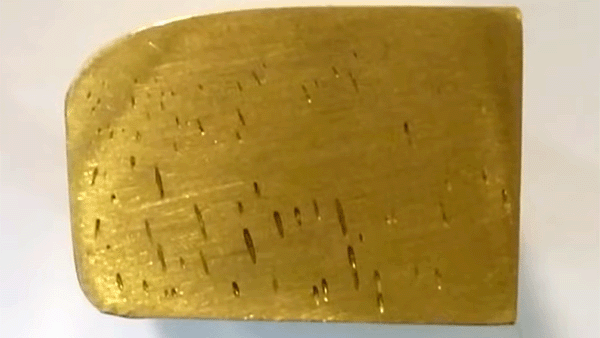Gold & Silver Testing: Limitations of Non-Destructive Testing Methods
4 January 2024

When it comes to detecting fake bullion, there are generally two types of testing methods – destructive testing and non-destructive testing. Destructive testing of precious metals is one of the surest ways to detect counterfeit gold and silver. However, the testing sample is either completely melted or partly removed to be melted, which is highly unacceptable to owners of silver and gold bullion bars and coins.
The alternative to destructive testing methods is non-destructive testing, where a cherished gold or silver bar or coin can be accurately authenticated to determine if it is genuine or fake. As accurate as non-destructive tests can be in detecting counterfeit bullion, these testing methods do have their limitations. In this article, we share our years of experience testing bullion at The Safe House to show a few limitations of non-destructive testing methods.
How Does Destructive Testing for Gold and Silver Work?
Before we delve into non-destructive testing methods, let’s review how destructive tests for precious metals are conducted.
Techniques like fire assay, which is often considered the gold standard for gold purity testing, involve melting the sample metal and separating it from impurities. The sample metal is entirely melted, or a portion of it is removed to be melted. This direct approach provides a high level of accuracy as it allows for the direct analysis of the metal's composition. A fire assay is capable of detecting precious metals at concentrations as low as parts per billion.
Fire assay is also considered the gold standard for purity testing because the testing process has a significantly reduced risk of surface contamination, a known issue that must be properly mitigated when non-destructive precious metals tests are conducted.
Given the complexity involved in preparing and conducting a fire assay of gold and silver bullion, such tests require skilled technicians and specialized equipment. It is, therefore, not a test owners of gold and silver can perform on their own, although it provides accurate results.
What Are Non-Destructive Testing Methods for Precious Metals?
Non-destructive tests do not harm or damage the precious metal test samples and are often the choice for retail investors of bullion coins and bars.
Types of non-destructive tests for gold and silver include:
• Density tests
Density is a physical property defined as mass per unit volume and is unique for every metal. For example, gold has a density of 19.30 g/cm³, while silver has a density of 10.49 g/cm³.
The first step in density tests is to weigh the precious metal using a high-precision scale and record the weight.

While conventional density tests involve using the volume displacement method, measuring the dimensions of the bullion is also practical if there are large quantities of samples to be tested.
For example, the Fisch gold, silver, and platinum coin tester checks the weight and dimensions of genuine bullion coins to see if they meet the specifications of the corresponding mints.
• Ultrasound tests
One weakness of density tests is that it can be difficult to assess if 2 sample gold bars are genuine if there is only a minute difference in their densities.
For example, tungsten is often used to make fake gold because tungsten’s density is very similar to gold’s (tungsten’s density is 19.25 g/cm³ while gold’s density is 19.30 g/cm³).
However, if you test for other properties between tungsten and gold, like celerity or speed of sound, then a much noticeable difference can be detected. The celerity of gold is 3240 m/s, while the celerity of tungsten is 5220 m/s.
Ultrasound tests involve sending ultrasound waves through the tested material and measuring its thickness. This measured value can then be compared to a measurement using a digital caliper to ensure that the sample is genuine.

• Electrical conductivity measurement tests
Electrical conductivity measurement tests (ECM) measure how well a material can transmit an electric current. Using the same example with gold and tungsten, there is also a noticeable difference in the electrical conductivity of these 2 metals – gold having an electrical conductivity of 44.7 MS/m while tungsten’s value is 18.52 MS/m.
ECM tests can be easily conducted with user-friendly testing equipment such as the Sigma Analytics Precious Metal Verifier, which can produce a result within seconds.
One advantage of ECM tests over the ultrasound test and XRF analysis is that it does not need direct contact with the tested material to produce an accurate result.
• X-ray Fluorescence tests
X-ray Fluorescence (XRF) is a unique precious metal testing method that determines the elemental composition of a tested material. Relying on the principle of interaction between X-rays and atoms, XRF analysis displays the purity or fineness of a precious metal sample and other metals within seconds of the X-rays hitting the tested metal.
X-ray tests can be performed using table-top or handheld XRF equipment, allowing a wide variety of materials with different shapes to be tested accurately.

Limitations of Non-Destructive Testing of Precious Metals
#1 – Lack of Penetration Depth for X-ray Fluorescence Tests
X-ray Fluorescence tests have limited penetration depth, making them unsuitable for testing very thick samples of gold and silver, like the 1,000 oz LBMA Good Delivery silver bars.
Denser materials, like silver and gold, tend to absorb more X-rays, reducing penetration depth.
#2 – Need For Direct Contact
Silver and gold testing methods like the ultrasound test and XRF analysis require direct contact with the tested material. Given that the bullion retail scene has introduced silver and gold bars that are sealed in plastic blister packs or plastic capsules, ultrasound tests and XRF analysis are rendered ineffective in such scenarios.
#3 – Need For Clean Surface
The quality of the contact surface matters as well, as irregular, rough, or unclean surfaces can affect how X-rays and ultrasound waves travel into the tested medium.
A good example was a few Canadian Maple Leaf gold coins that were tested at The Safe House vault several years ago. These gold coins are stamped with a 99.99% purity. However, our X-ray tests consistently show that the gold coins had 99.86% purity.
We sent these coins for a fire assay to get to the bottom of this gold content discrepancy. The assayers drilled into 5 points on each coin and melted the drilled shavings. Results from the fire assay showed that these Maple Leaf gold coins indeed had 99.99% purity, leading us to conclude that the X-ray Fluorescence test could have picked up foreign material on the coins’ surfaces.

#4 – Need For Uniformity Within the Tested Material
Through our many years of testing millions of troy ounces of bullion, The Safe House vault also encountered a 1-kilogram gold bar that failed ultrasound tests consistently. This means that the tested thickness of the gold bar differs significantly from point-to-point measurements using a digital caliper.
The Safe House testing laboratory sent the gold bar to the original refinery to be analyzed. The refiner cut open the bar and found the presence of tiny pores inside the bars. These pores are the culprits for disrupting our ultrasound tests.


Despite these pores, the gold bar was manufactured with 1 kilogram of gold content. However, the gold bar had slightly larger dimensions, albeit within the refinery’s tolerable specifications.
Importance of Using More Than One Test For Precious Metals
The limitations of the non-destructive testing methods we have listed above show the importance of conducting more than one test, never relying on the results of one type of test.
Recalling the example of a gold bar and tungsten bar that has the same weight, a density test may not detect a gold-coated tungsten bar easily, given the similar densities of both metals.
However, adding a second test like ultrasound or the electrical conductivity measurement test would have identified the fake gold bar easily, given the significant differences between the celerity and electrical conductivity.
Similarly, a silver-plated copper bar can be made larger to pass electrical conductivity measurement tests. However, the counterfeit bar can be detected quickly if the ECM test is paired with a density test or an ultrasound test.
Summary
Non-destructive precious metal testing methods are extremely useful in detecting fake bullion bars and coins, without causing damage to the tested sample. We have used many of such testing methods in The Safe House vault’s testing labs to authenticate millions of troy ounces of precious metals. However, effective usage of these testing methods needs to be accompanied by knowledge of testing principles and material properties. Moreover, while counterfeiters can fake a single property of a fake bar or coin, it is highly unlikely that they are able to fake 2 or more properties of a material, making testing with multiple methods extremely important in detecting fake precious metals.